Lee,kyoung-sung
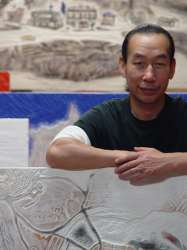
Südkorea
018-372-6269
http://blog.naver.com/w1m4/70036862113
Kunstart: Malerei
Technik: Mischtechnik
Stil: Gegenständlich
Vita / Lebenslauf:
Lee,kyoung-sung
1985 Graduated,Painting Dept.of Chosun University(B.F.A)
Solo Exhibition
8Times solo Exhibition(Seoul,korea)
Award
Awarded 26 times in various invited exhibition
(National Art Contest,Kusang Art Contest,Kyunggi Art Contest etc)
Group Exhibition
Hankuk Art Museum,Leeyong Art Museum,kyunggi artist Invinting Exhibition,
Gallery Soo,Gallery Jin, Feel-Harmony ArtFair,Yongin International Art Expo,
MANIF International Art Fair,etc 120 times
Present,Member of Hankuk Art Association
Member of Kusang Art Association
Member of Art Mission
Executing officer of Kusang Art Exhibition
Professional Artist
E-mail. w1m4@naver.com
http://blog.naver.com/w1m4/70012436507
tel:031-338-1785 mobile.018-372-6269
Aktivitäten / Ausstellungen:
The will of art expressed by way of symbolism and semiotics, the blooming hope of life ● Like someone said �a picture takes after its painter,� Lee Gyeong-Seong�s works deliver a heavy but warm esthetic sense, which is somewhat similar to what most people think about him. His pictures are rarely wild, rough, or furious. That might be the reason one is likely to feel the calm and lyrical tide rising in front of his works, whose suggestion and aftereffect soothe and ease appreciators� mind by joining their internal sentiments. During his early stage, in fact, he was not much into this kind of soft, low, and breezing way of creation. In the past, he showed an experimental, avant-garde, and energetic tendency full of red, intense lines and multiple objets. His works of these days, however, are characterized by contemplations, serenity, tranquility, and the mildness emanating from them. In the meantime, the mildness, which might have stemmed from passing numerous crests of passion and consequently becoming able to maintain the peace of mind in the presence of vicissitudes of life, comes to us in the shape of warm-heartedness, or affability. ● Appreciating his works, many turn back the hands of time and remind themselves of their own cherished, young memories, utilizing the works as a medium, or a vessel to take back and keep what they missed for a while. At a closer look, however, it might be correct to say his focus lies not in the school itself ? where anyone went when they were young, but in the semantic representation about life based on the school. And the semantic representation ultimately comes in the form of various symbols and signs, beyond the basic pictorial elements of lines, shapes, and colors. �The word of �bush�, one of my favorite words and the name of a shrub species, I think the word insinuates the painful and exacting journey one must go through. And I consider the word representing the God�s blessing and redemption one encounters during that journey.� he once said. Like this, Lee Gyeong-Seong intends to deliver and share his sentiments through the various symbols and signs expressed in his pictures. This might be the way his philosophy and perception of life show themselves in proportion to the days he has lived.
Then, which part of his pictures shows the strongest aspect of symbolism? The answer is �school�, which reveals itself everywhere in his works. Lee Gyeong-Seong�s �school,� something especially conspicuous in his paintings, is not just a material structure, but a sort of gateway through which people and their lives directly interact. The school gate is where the mystery of birth begins, beyond the meaning of an entrance. The playground, in turn, signifies the journey of ups and downs connecting today with tomorrow. The flag sitting on the tip of the school is considered an esthetic sign implying the afterlife while the statues and other objects around it are viewed as secular and religious instruments, which describe the present and the past in a fragmentary manner. In total, by appreciating his works, one comes to find the hidden journey of life running between birth and death. ● Another noteworthy part is the shades he uses, that is, the various colors including the prevailing white. For long, Korean people used to express their grief, euphoria, birth, and death through white and black. In other words, the two colors have functioned as an imaginary allegory for them while yellow, blue, green, and the like have been used to express affirmation or joy. It is just the same with Lee Gyeong-Seong�s paintings. He uses pure white to finish the colors he painted on his canvas to depict joy, sorrow, anger, and pleasure. The canvas covered with white, though devoid of background, landscape, shade, and volume, is painted and diluted over and over to offer the plentiful emptiness of colors, which is neither unfamiliar nor raw. These sensuous colors, as already known, are based on Lee Gyeong-Seong�s visual experience. These are images without shape, transformed into a sort of knowledge or conception, and have an inclination toward the universal definition of a group. That means the values the colors suggest are reinterpreted in terms of symbolism. ● White, one of Lee Gyeong-Seong�s favorite colors, is another sign to remind the journey of life, just like the motif of school. Though the journey could be understood as a will to fill up what is missing in the real life, it is also possible to regard it as a kind of hope the artist keeps against his life. His paintings like an enigma, however, do not reveal the current life, the ultimate future, and other auxiliary fragments of thinking without delay, which might be one of Lee Gyeong-Seong�s characteristic differences. Nevertheless, the white he frequently uses makes its appreciators feel simplicity, the purity of emptiness stemming from the accumulation of the void, refined and artless beauty, and unsophisticated attraction. Now, some might come to notice these are where the softness and warm-heartedness of Lee Gyeong-Seong�s works come from.
Though it is rather easy to explain about his works like above, each and every piece of his works is something accompanying a long time of efforts ? I cannot but feel writers and critics have less difficulty doing their creative jobs than painters. He usually spends three or four months painting and deleting over and over. As his artworks of mixed materials are the results of such endurance, it might be nonsensical to explain about them in a short article like this. Nevertheless, I do not want to skip the following: Lee Gyeong-Seong�s artistic belief and will. ● Appreciating his pictures at his solo exhibition held at the Seoul Arts Center last year, I tried a simple and superficial explanation with a formal viewpoint. It was because his image of emptiness, containing both the void and the lack at the same time, came to me in such a sentimental way. However, after my recent and first visit to his studio in Yongin and a serious conversation with him, I came to read the pure and artless aspect hidden deep down in him. Specifically, his efforts as an artist to overcome his own life - which cannot but be tiresome due to its connection to reality, his artistic activity to rearrange all objects and memories based on what is right, and his religious contemplation to look down on potential evils were what I discovered during the conversation with him. ● �Anonymous people and nature vanishing in each moment of history - they look like the incarnation of Jesus Christ, bearing people�s sin and agony in God�s appearance. I want to talk about it in a diachronic concept,� he said with regard to the theme of this exhibition. I see something warm and cordial in his artworks. I taste his symbolism inducing joy and offering the pleasure of figuring out an enigma. It must be exacting to become a full-time painter for Lee Gyeong-Seong, the father of his three sons and daughters, the husband of his wife. Nevertheless, he always tries not to lose his beautiful original intention, which I see blooming vigorously amid the realistic problems and despair he has gone through. On his conviction and will, it is blooming in the name of hope. ■
|
|
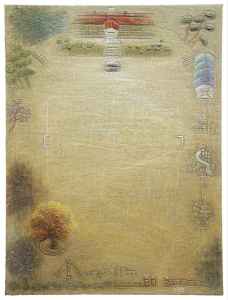
|
thorntree-first love
Malerei
Mischtechnik
130 x 163 x 4 cm
unverkäuflich
mehr Informationen
|
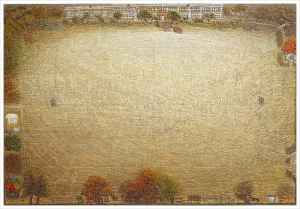
|
thorntree-first love
Malerei
Mischtechnik
130 x 163 x 4 cm
unverkäuflich
mehr Informationen
|
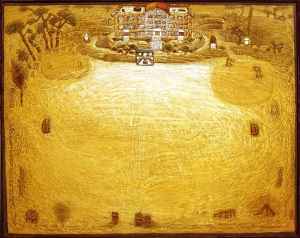
|
thorntree-first love
Malerei
Mischtechnik
130 x 163 x 4 cm
unverkäuflich
mehr Informationen
|
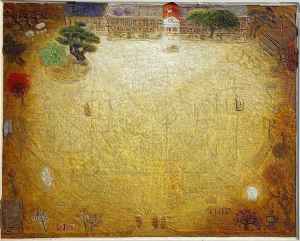
|
thorntree-first love
Malerei
Mischtechnik
130 x 163 x 4 cm
unverkäuflich
mehr Informationen
|
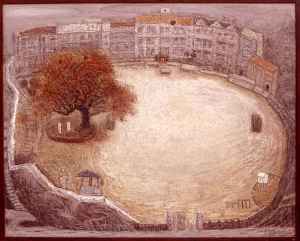
|
thorntree-first love
Malerei
Mischtechnik
130 x 163 cm
unverkäuflich
mehr Informationen
|
|
 english
english
 español
español francais
francais
 russkii
russkii english
english
 español
español francais
francais
 russkii
russkii




